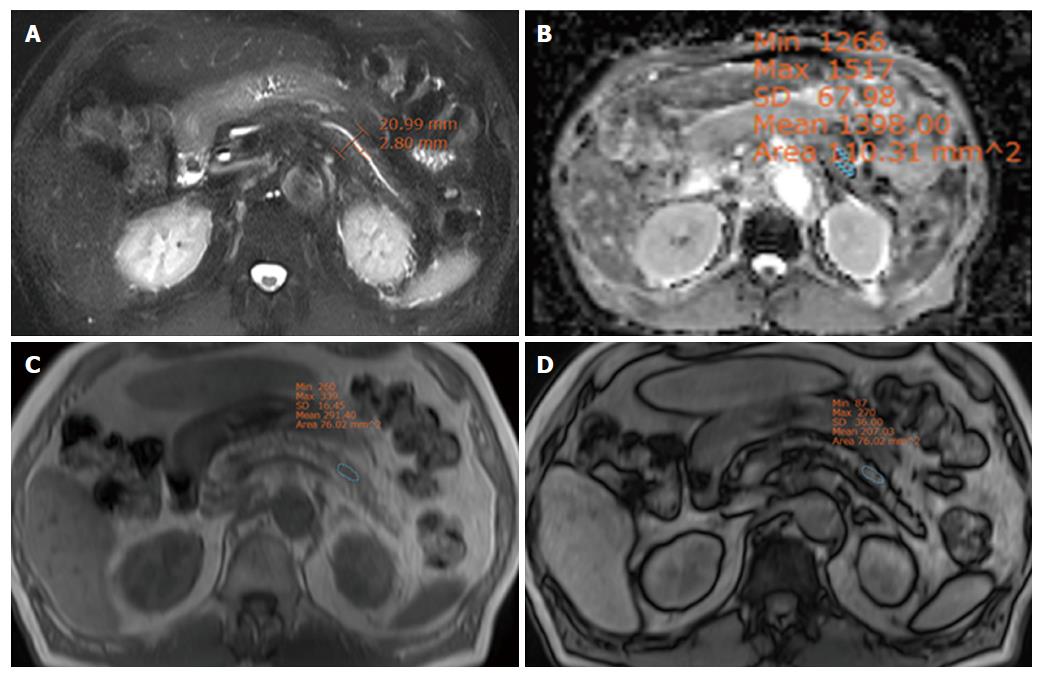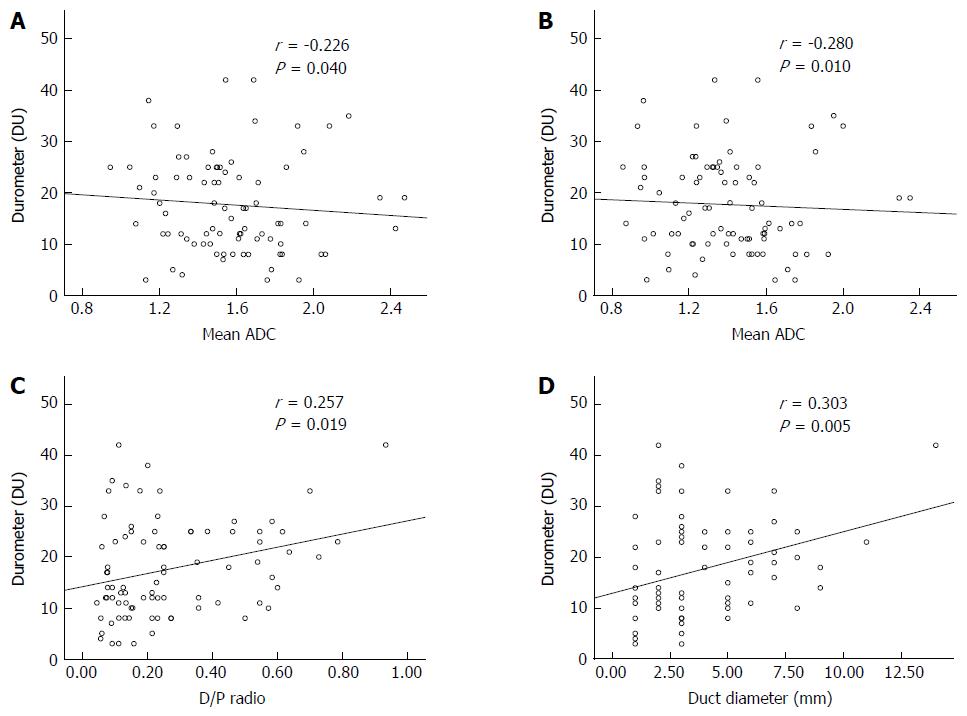Copyright
©The Author(s) 2017.
World J Gastroenterol. Mar 21, 2017; 23(11): 2044-2051
Published online Mar 21, 2017. doi: 10.3748/wjg.v23.i11.2044
Published online Mar 21, 2017. doi: 10.3748/wjg.v23.i11.2044
Figure 1 Measurement of pancreatic hardness by durometer during the operation.
A Rex Durometer (Rex Gauge, Buffalo Grove, IL, United States) was placed perpendicular to the pancreatic parenchyma where no tumor was located to measure the pancreatic hardness.
Figure 2 Pancreas cancer with a hard pancreas.
Magnetic resonance imaging of a 66-year-old male with pancreas head cancer who was found to have a hard pancreas (durometer measurement: 18 DU). The diameters of the pancreatic duct and parenchyma were 8 mm and 21 mm, respectively (A). The apparent diffusion coefficient value of the pancreatic parenchyma was 1.290 mm2/s (B). The signal intensity of the pancreas on in-phase imaging was 256.53 (C) and on opposed-phase imaging was 254.80 (D).
Figure 3 Pancreas cancer with a soft pancreas.
Magnetic resonance imaging of a 74-year-old male with pancreas head cancer who was found to have a soft pancreas (durometer measurement: 8 DU). The diameters of the pancreatic duct and parenchyma were 3 mm and 21 mm, respectively (A). The apparent diffusion coefficient value of the pancreatic parenchyma was 1.398 mm2/s (B). The signal intensity of the pancreas on in-phase imaging was 291.40 (C) and on opposed-phase imaging was 207.03 (D).
Figure 4 Scatter plots of durometer measurements vs apparent diffusion coefficient values.
The durometer results are statistically significantly correlated with the mean apparent diffusion coefficient (ADC) (A), minimal ADC (B), duct-to-pancreas diameter ratio (C) and duct diameter (D).
- Citation: Hong TH, Choi JI, Park MY, Rha SE, Lee YJ, You YK, Choi MH. Pancreatic hardness: Correlation of surgeon’s palpation, durometer measurement and preoperative magnetic resonance imaging features. World J Gastroenterol 2017; 23(11): 2044-2051
- URL: https://www.wjgnet.com/1007-9327/full/v23/i11/2044.htm
- DOI: https://dx.doi.org/10.3748/wjg.v23.i11.2044












